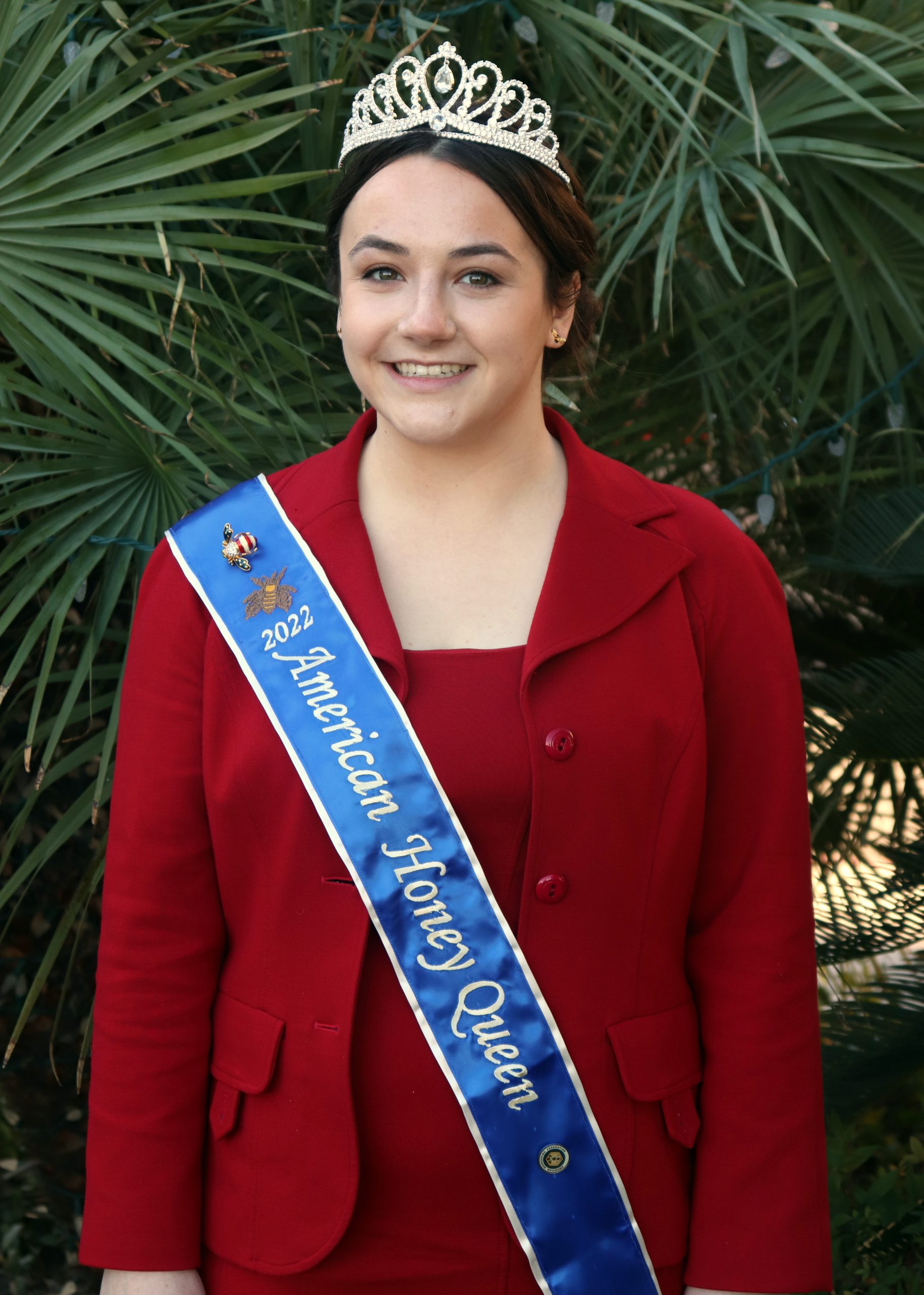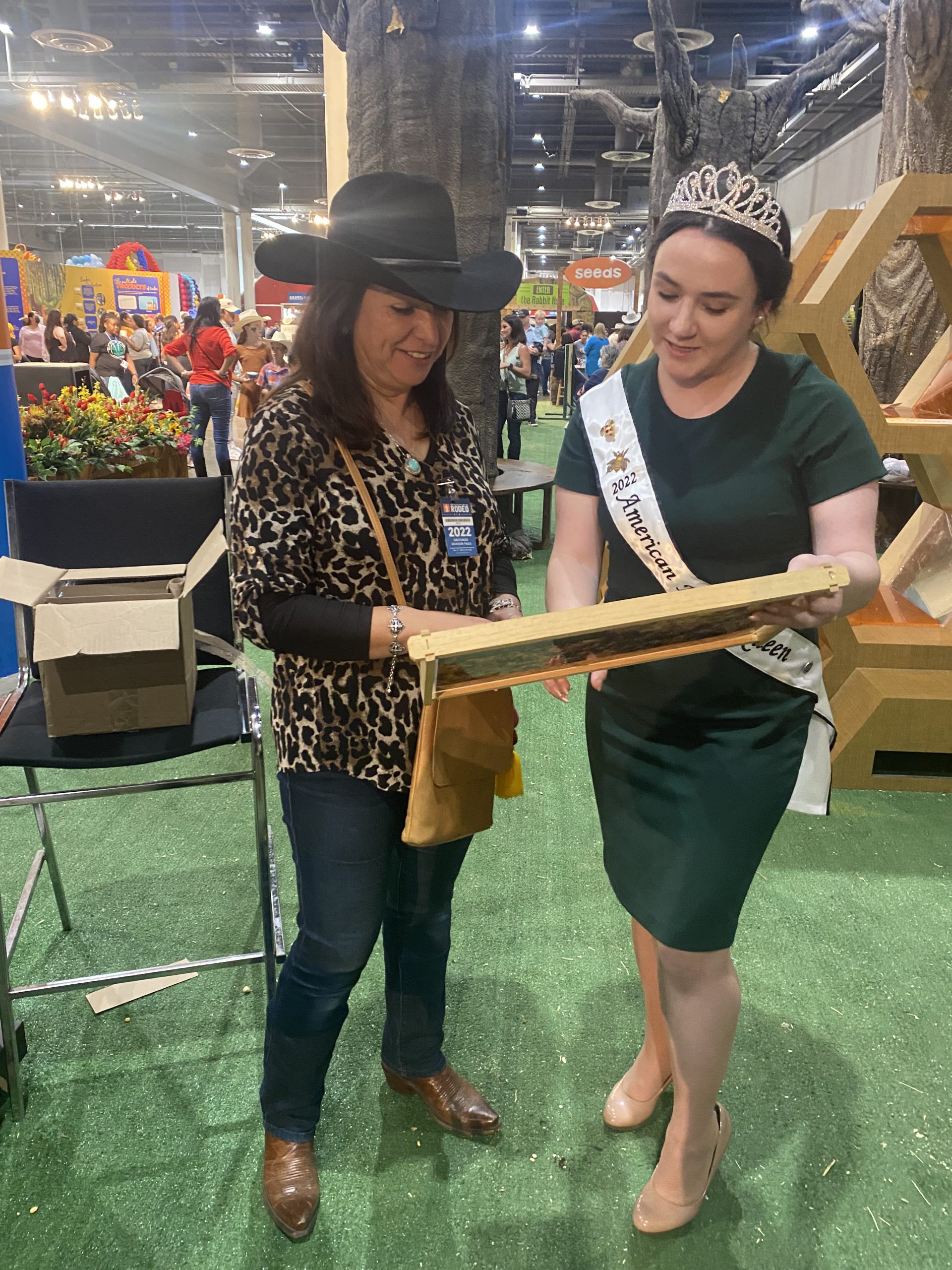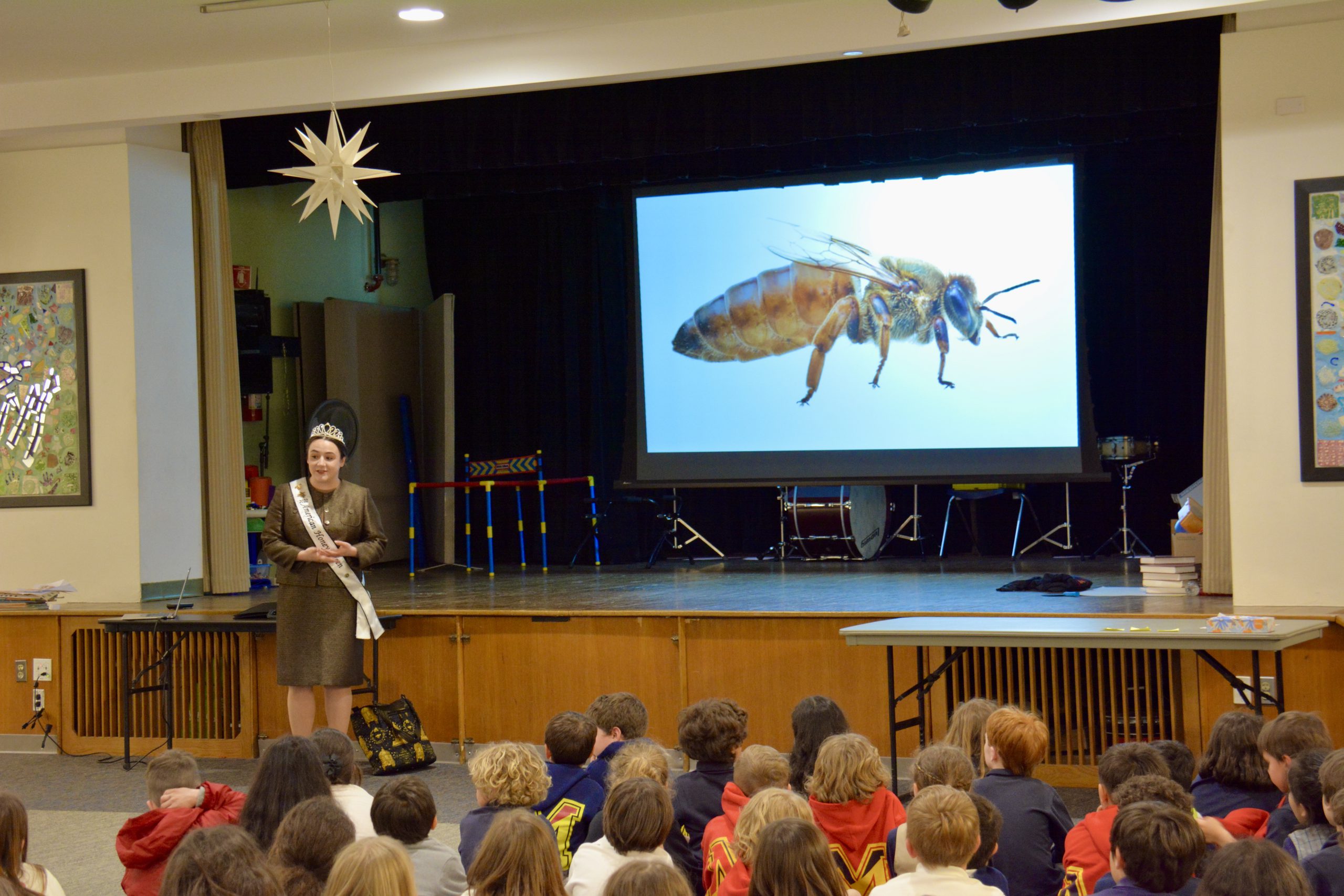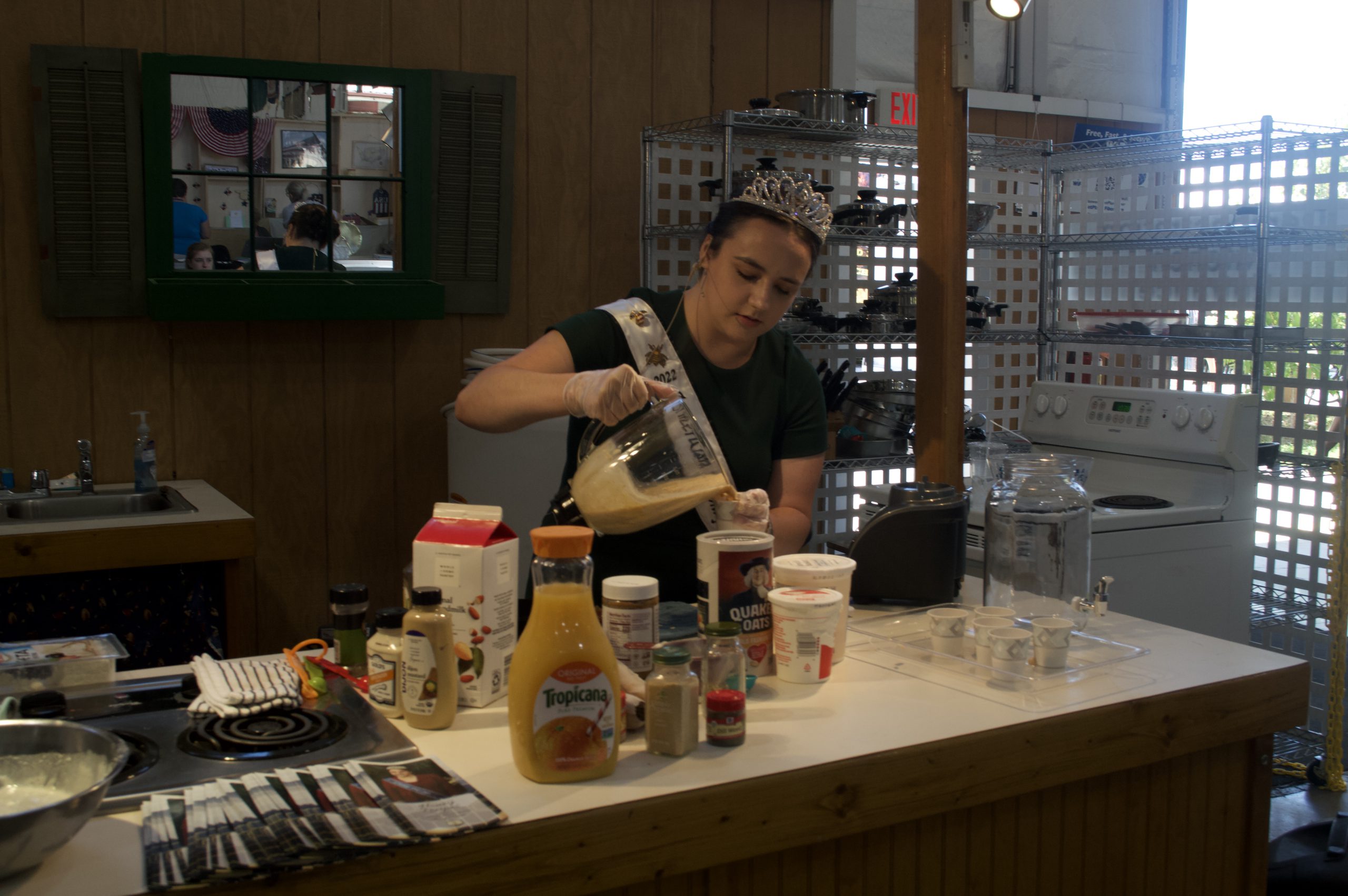Lucy Winn,
2022 American Honey Queen
I always enjoy spending time in Bethlehem, Pennsylvania. My visit this past May was particularly sweet. I spent the day at Nitchmann Middle School and offered cooking demonstrations to seven classes of family and consumer science students. I called on the sixth, seventh and eighth graders to measure, mix and flip. Together, we made delicious honey french toast with local Pennsylvania honey. As we cooked, I explained the process of honey production, discussed the importance of supporting local beekeepers and showed the students a few varieties of honey extracted in the surrounding region. Knowing my audience, I tried to make my presentation feel less like a class lecture and more like a conversation. I made sure that everybody participated in making the recipe and I always invited questions. When our plates were full and it was time to dig in, I saw it: the “aha moment.”
The aha moment is a nonverbal confirmation that I have successfully done my job, and it is what I look for every time I am giving a presentation or speaking publicly about the honey industry. Head tilt, with eyes lit up, typically followed by an exclamation or another question – the aha moment is a moment of realization and affirmation that the audience is “getting it.” At Nichmann Middle School, I saw the aha moment when the food science students realized the quality of local honey and understood its importance within the culinary and agriculture industries. Aha!
What can we do to see that aha moment more often? How do we emphasize the true importance of honey bees to the general public?
In my travels as the 2022 American Honey Queen, I have found that most people are open to learning about honey bees. I love sharing information on this topic, yet I suspect most of us experience the same initial questions – where do I start? Bee biology? Honey production? Hive care? Honey and its importance are rich and pressing topics of discussion, especially helping audiences to know where their honey comes from; however, the correct answer to our question is simple. We should start with the topic we enjoy most. Through speaking about an aspect of the honey industry that most piques our interest, the audience is sure to find it interesting and worthwhile. Sometimes, there is no greater teacher than enthusiasm.
Regardless of topic, I always avoid overly technical jargon – even with students as smart as those at Nitchmann Middle School. Getting lost in technical terms and language of the industry can muddy the presentation. Cut through the noise, highlight important details and get to the main point. Our goal as educators is always to inspire questions and make connections regarding beekeeping.
To this end, I have found it useful to build a relationship with my audience by asking them questions, inviting participation and tying the presentation back to the audience and their area of interest. For food science students, discussing honey production while executing a recipe was engaging, but for a group of young Girl Scouts, an interactive craft explaining the anatomy of honey bees with colorful pom-poms and pipe cleaners might be more welcome.
My tips and tricks for presentations are straightforward and I have found that they are effective. Encourage questions. Speak clearly. Use simple terms everyone can understand and keep your presentation brief. Don’t be afraid to show your own enthusiasm. Finally, keep your eyes open for those aha moments (and know that some honey samples for the audience never hurts)!













